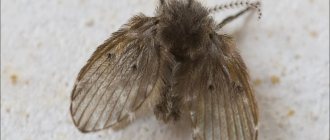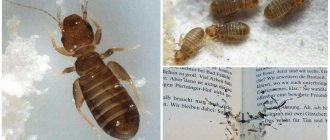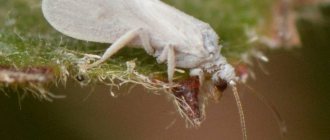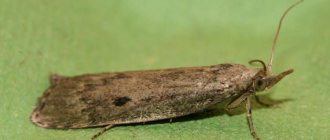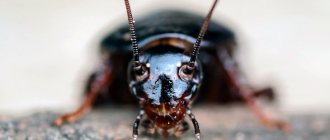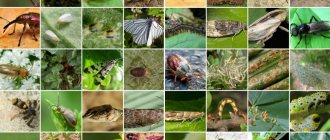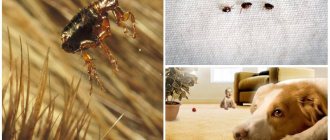Why do sewer midges appear in apartments? Description of insects, habitat, favorable conditions for living and reproduction, life expectancy. The most effective methods of combating butterflies. Mechanical methods of struggle. Preventive actions.
The owners of absolutely any apartment or country house may be faced with the appearance of a small annoying midge in the room. There are several types of midges that can live in residential areas; owners are often bothered by fruit and sewer midges.
Each species has its own characteristics and differences, habitat, and diet. For example, fruit ones, as the name suggests, prefer fruits, but it is worth clarifying that they are attracted to spoiled and rotten fruits.
Regarding sewer, they are interested in moisture; they can be in bathrooms, drains, sewer pipes, as well as damp soil. Such a neighborhood will not please anyone, so when a midge appears, you want to get rid of it as soon as possible.
What they look like
These insects have small body sizes that do not exceed 2 mm. The black body is covered with short hairs. Outwardly, they may resemble miniature moths.
Adults have fairly long antennae on their heads, as well as leaf-shaped caps. These insects are also called butterflies or drain flies. They are active in the evening and at night, preferring to rest during the day.
It is worth saying that they fly quite poorly, so they can often be seen crawling. The lifespan of adults is about 2 weeks, but this is not reflected in the population decline at all, since they are very fertile and the population is constantly growing. The life cycle includes several stages of development.
Individuals at the larval and pupal stages are protected by a thin film. They are often found in septic tanks and drainpipes at this stage. The larvae's diet consists of rotting organic matter, as well as microscopic vegetation.
They remain in the larval stage for 9-15 days, then enter the pupal stage, which lasts about 20-40 hours. Young sexually mature individuals emerge from the pupae, ready to reproduce and lay offspring. At one time, a female can lay from 30 to 100 eggs.
Habitat, nutrition, reproduction
Insects love dampness.
In nature, they live in damp forests or swampy areas. In human homes, they find refuge near the sewer system, under basement canopies or in damp rooms without heating. Females lay eggs in manure or compost heaps, the remains of rotting vegetation. The larvae hatch from the eggs on day 7 and turn into tiny midges in 1-3 weeks.
Adults feed on nectar and pollen. The larvae eat rotting vegetation. Insects live in large colonies, so detecting their invasion is easy.
Is sewer midge dangerous?
It is worth understanding that these insects are inhabitants of a completely non-sterile clean environment. They can sit on sewer pipes, waste, and then fly to the dinner table and climb on food.
Therefore, the risk of infection by dangerous bacteria will always be present. In addition, due to their small size, they can be swallowed or eaten along with food, and they can fly into the nose and eyes.
These small insects also serve as food for larger insects. Therefore, such a nutrient medium will attract large flies, spiders and other pests into the house.
There are cases where sewer flies have caused allergic reactions in people. Of course, you need to get rid of them and take the most effective methods of struggle.
How does the basement mosquito differ from its wild counterparts?
Mosquitoes that live in the basements of an apartment building differ from their wild relatives in size, which is affected by the lack of adequate nutrition. Male insects feed exclusively on plant juices, so in winter it becomes difficult to find food. Bloodsucking - only females. They pose the main danger. Squeakers are well adapted to low temperatures and can breed not only in summer, but also in autumn. To produce the first offspring, females do not need blood, but for the second they become real vampires.
During the day, these bloodsuckers hide in shelters, and at night they fly out to hunt. If wild mosquitoes can enter the house only through windows unprotected by mosquito nets, then basement mosquitoes have their own ways. Ventilation shafts, air ducts of air conditioning systems and oven hoods are open doors for the mosquito army.
How to protect yourself from infection
You always need to remember that they appear for a reason, there is always a reason where they come from. This means there is something in the apartment that attracts them. This can be high humidity, dampness, stagnant water, flower pots with very waterlogged soil, dirty drains, as well as garbage that is not thrown away for a long time.
Often the fly can be observed near a food source, or favorable conditions for life and reproduction. Therefore, it will not be difficult to find the reason.
Protection and prevention consists of eliminating the source that attracts insects. You should unclog sink drains, get rid of standing water, inspect bathroom tile seams, and inspect water and sewer pipes.
Features of basement insects
The basement is a separate eco-environment that is conducive to the development of household insects. There is no seasonality for basement dwellers. Their main feature is the ability to annoy residents of the lower floors of apartment buildings both in summer and winter. Communication lines for water supply and heating run through the basement rooms. This helps maintain a comfortable temperature and humidity for insects, regardless of the time of year.
There are a number of means that you can use to get rid of mosquitoes
Use of traps and chemicals
In the fight against sewer midges, you can use a variety of chemicals, and traps are also very effective. Traps should be installed in places where the largest number of insects are observed, as well as where they may be attracted to something, for example, near a trash can, sink drain, etc.
Let's consider the most effective and popular means, learn about the features, advantages and possible disadvantages.
Adhesive tape Raptor
This tape is made to combat fruit flies, but has been successfully used against sewer flies. According to the manufacturer, one set is enough to protect the premises for 180 days. The duration of use of the trap depends on the degree of infestation, but as a rule, 1 trap is enough for a month.
The traps are produced in plastic containers and contain a non-toxic substance that is absolutely safe for humans. Those who have already used these traps note their very simple and easy use, high efficiency and wide spectrum of action, since they allow you to get rid of mosquitoes and various bugs. The estimated cost of the traps is 185 rubles.
Liquazim
A very popular product that allows you to quickly and effectively get rid of a huge amount of sewer midges. If there are a lot of insects in the room, it is better to purchase a 4-liter canister.
It is used as follows: the product is poured into the sewer. Be sure to read the instructions for use before use. This product does not contain dangerous toxic substances, therefore it is considered absolutely safe, but when working with it it is better to adhere to safety precautions and use rubber gloves
The composition includes citrus oils and some natural microbes, which allows you to get rid of clogs, organic matter, scale, and also eliminate unpleasant odors.
The substance deprives midge larvae of the nutrient medium, and as a result, the offspring are destroyed. Whatever the result after the first use, you should repeat the procedure, which is also recommended by the manufacturer.
Most reviews confirm the effectiveness and quick action of the product. There were negative reviews that said that absolutely no effect was observed.
But most likely, this remedy was used against fruit flies, which are not entirely correct to destroy in the sewer. The average price is 1800 rubles.
Folk remedies
Some people pour dry powder into the toilet, used for cleaning sewers, dissolved in three liters of water.
You can also pour vodka or diluted alcohol into a spray bottle and spray it into the air in the room. Flies don't like the smell of alcohol, so they'll fly away. Instead of vodka, you can take vinegar or essential oil of clove, eucalyptus, lavender or mint. The oil is dissolved in water in the amount of 5 drops per 500 ml of water and sprayed indoors. This treatment of the toilet is not harmful to people, except in cases of allergy to any oil.
Plants that repel flies - natural insect repellents
Tansy helps repel flies and midges. It is collected (optionally during flowering), tied into bunches and hung in the corners of the toilet room. After a couple of weeks, the bundles are replaced with fresh ones.
You can also make homemade insect traps. To do this, you need to cook a viscous syrup with lemon juice, water and sugar; the syrup should be as thick as uncandied honey. Then you need to cut the corrugated cardboard into strips about two centimeters wide, make a hole at one end into which a thread is threaded, lubricate the strip on both sides with syrup and hang it in all corners.
Tape trap (homemade)
Flies also do not tolerate sugar substitutes such as saccharin. Therefore, if there is such a substance in the house, the surfaces of the walls of the toilet room can be sprayed with a saccharin solution and the procedure can be repeated periodically.
In the same way, walls can be treated with hexachlorane solution. You can also make sweet baits with pepper or formaldehyde mixed in them. Flies, having tasted this “treat”, die. Fresh bracken leaves can help keep flies away, but they need to be replaced frequently.
The destructive and repellent effects of various plants on insects
Ledum, knotweed, buttercup, leaves of serviceberry and rowan, thuja twigs, ivy, branches and fruits of horse chestnut, as well as juniper, dry peel of lemons, oranges, and tangerines are also good for this purpose. They don't like flies and aloe juice. If you dilute it with hot water and place it in the toilet, the flies will disappear.
You can plant marigolds or basil near the toilet building in your dacha. Their smell also repels these insects quite well. But this is only if they live in the country permanently. In the heat, without watering, plants can simply dry out. Website with individuals in the city, prostitutes Chelyabinsk Leisure intimate for men
Some people install a toilet from a dry toilet, tightly blocking insects’ access to the contents of the drainage pit.
Some people make a hole in the toilet equal to the hole in the toilet floor and secure the toilet over the hole. Cover the top with a lid.
Use of sprays and poisons
These drugs help to cope with severe infection in a short time. They can act as the main means for combating sewer midges, and can also be used in combination with other methods. Let's look at the most popular and effective insecticides.
Aerosol Raid
This is a universal remedy that is used in the fight against various types of pests, including sewer midges.
The advantage of aerosols and sprays is the ability to treat hard-to-reach areas; the active substances penetrate into nooks and crannies and provide quick results.
As reviews show, this drug is easy to use, provides high efficiency, long-lasting action and a wide spectrum of action. It is also worth noting the low cost, which averages 170 rubles.
Aerosol Raptor
Another universal product where the manufacturer combines a cosmetic effect, pest control, and prevention. The composition contains natural microorganisms, thanks to which signs of decomposition, pest larvae, harmful bacteria and unpleasant odors are destroyed.
Used to treat walls, wall voids, floors, ceilings, bathrooms, carpets, garbage containers, technical drains. Regarding efficiency, it cannot be said that it is really high, but due to its versatility, it has really become popular. The approximate cost is 250 rubles.
Pipe cleaning
This stage is one of the most important in the fight against sewer midges. This does not mean cleaning the pipes; pest control will not bring results, since by getting rid of adult individuals, new individuals will appear from the deferred offspring.
In order to detect a midge, you should do the following. Pieces of adhesive tape should be placed near the sink and on it overnight. In the morning, if there is an infestation, there will be insects on the tape.
Afterwards, you should take a cable or brush and clean the pipes to get rid of rotting water, organic matter, and hair. Then take a pan of boiling water and very slowly pour it down the drain. Boiling water makes it possible to destroy most of the larvae. At the last stage, a chemical cleaning agent is poured in. Remember that each product has its own instructions, which must be followed.
Harm
Insects do not pose a direct danger to humans. They do not bite, do not spoil plants and do not eat food supplies, but they are carriers of infectious diseases. Their annoying proximity causes discomfort. Butterflies contribute to the development of fungus and mold in the home, which worsens the sanitary condition of the premises and can cause various diseases in humans.
In rare cases of an insect bite on a person, serious consequences can arise for the latter. There is a high probability that pathogens of serious diseases will enter the bloodstream with insect saliva: fever virus and leishmania.
Destroying Tips
These insects live in flocks and do not scatter throughout the room. Therefore, it will be very easy to destroy them in the early stages of infection. Do not give them time to reproduce; the longer they stay indoors, the more offspring they produce, which means their numbers increase every day.
Cleaning pipes is very important, but you can’t do it with chemicals alone. Be sure to use mechanical methods. Use metal brushes, which will be most effective, as well as metal cables. The pipe walls should be cleaned as best as possible.
You won't be able to get rid of them in one day. By cleaning the pipes, you can destroy the offspring, but you should also get rid of the adults. As a rule, fighting them takes about 20 days. The appearance of new individuals is normal, and you need to be prepared for it.
When fighting them, you should store all products in containers and bags that are hermetically sealed. Having deprived midges of food sources and their usual environment, they can fly to food. When using chemicals, be sure to follow the instructions and safety precautions.
The need to drain the basement
Mosquitoes breed in places with high humidity. Leaks in heated basements are an ideal environment for increasing the population of little vampires. The need to drain the basement, as a rule, arises not after a leak is detected, but in the case when this measure becomes not preventive, but vital.
Dampness in the basement of a private house is not only an excellent incubator for insects, but also a direct threat to the strength of the foundation and floor. High humidity is the cause of corrosion of metal parts, the occurrence of fungal mold on concrete bases and rotting of wooden structures. Good waterproofing is one of the measures to increase the service life of the structure and ways to control mosquitoes in the basement.
Drying the basement is one way to combat
What to do
There may be many secluded places in the apartment in which midges feel comfortable and lay eggs. The following will help you get rid of annoying guests:
- thorough cleaning of the home;
- maintaining sewerage, plumbing, and basements in working order;
- storing products in conditions unfavorable for rotting;
- conscientious care of pets;
- choosing optimal conditions for indoor plants.
Important! If you don’t get confused when you find little uninvited guests in your home, but take action right away, it’s not that difficult to deal with the problem. To do this, you just need to outline the right option for how to deal with midges.
